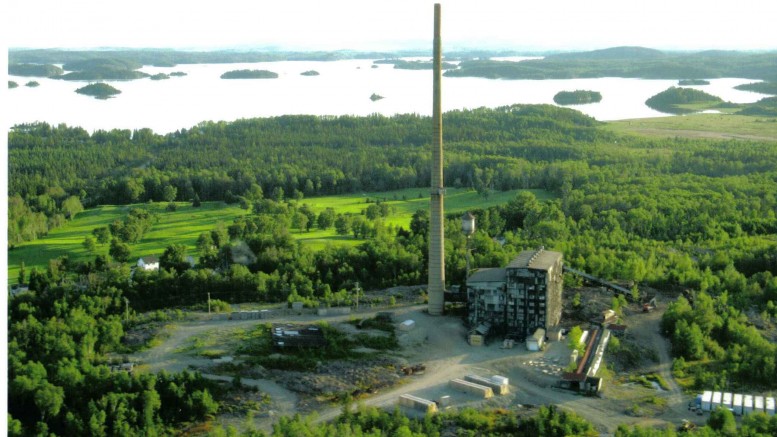Junior explorer Clifton Star Resources (CFO-V) has seen its extensive resource drilling efforts pay off, with the company delineating a multi-million ounce, open-pit indicated gold resource at its Duparquet project in northwestern Quebec’s prolific Abitibi region.
The wholly owned Duparquet project compromises two property tenements that run 7.7 km along strike on the Porcupine-Destor fault zone, which has accounted for historic gold production in excess of 80 million oz.
The company completed 85 drill holes totalling 28,000 metres at Duparquet following joint-venture partner Osisko Mining’s (OSK-T) abrupt termination of its stake in the project last June.
The new resource marks the first time Clifton has been able to incorporate results from its five main zones into a single estimate. Duparquet lies along a stretch of historic underground gold operations, including the Beattie, Donchester and Duquesne mines, which jointly produced over 1.5 million oz. gold between 1933 and 1991. The project houses two more resource-stage targets in the Central Duparquet and Dumico zones.
Clifton’s integrated resource is based on 223 surface channel samples and 668 surface drill holes. Duparquet’s combined indicated resource totals 30 million tonnes grading 1.8 grams gold per tonne for 1.7 million contained oz. gold. The project has a further inferred resource of 29 million tonnes carrying 1.8 grams gold, or 1.7 million contained oz. gold.
Close to half of the resources are in the indicated category and most of the mineral resources are within the in-pit shell, president and CEO Michel Bouchard explains. He says Clifton will try to upgrade the resources category by definition drilling, and continue to expand the zones with targeted exploration drilling.
The company’s earlier resource estimates treated Duparquet as a group of separate deposits, and they were limited to the inferred category.
Clifton’s updated model assumes a high-grade cap of 25 grams gold with a minimum true width of 3 metres. Mining and milling costs are estimated at US$24 per tonne under a Whittle open-pit structure with a US$1,380-per -oz. gold price and a 0.6-gram-gold, in-pit cut-off.
“The combined mining and milling costs used in the pit simulation for the base-case cut-off are conservative,” Bouchard says, noting that the gold price is a three-year average. “Our preliminary waste-to-ore ratio sits at around eight to one, but the offset is the relatively high gold grade at Duparquet.”
Breaking the resource down by section, the project’s in-pit indicated resource totals 22 million tonnes grading 1.81 grams gold, or 1.3 million contained oz. gold. Underground indicated resources account for an additional 3.6 million tonnes carrying 2.74 grams for 314,600 contained oz. gold, while historic dry-land tailings at the Beattie mine add indicated resources totalling 4 million tonnes at 0.93 gram for 123,200 contained oz. gold.
Clifton released metallurgical testing results in April, with sulphide-oxidation recoveries clocking in at 93%.
“Two conventional processes [bio oxidization and pressure oxidation] and one emerging process [Albion] have all proven capable of achieving high gold recoveries from Duparquet concentrates,” Bouchard says. “The choice between processes may now be considered based on relative economics.”
Clifton has so far limited its drilling to open-pittable depths of less than 400 metres, but has found that many of its drill holes have bottomed out in mineralization, and Bouchard notes that discoveries in the Abitibi region can extend to depths of up to 2 km.
Two drills are running at Duparquet with a focus on the Beattie and Donchester properties — extensions of the Beattie North and South zones being a priority. Clifton will also work to define the limits of the known mineralization at depth, as drilling extends to 600-metre targets.
Clifton intends to use the updated resource as a springboard to catapult itself into a preliminary economic assessment slated for year-end release. According to Bouchard, the conservative nature of the preliminary model leaves the company room to improve the project’s economics.
“Preliminary sensitivities studies have demonstrated that lowering of mining and milling costs, as well as pit design changes, could allow for a lower cut-off and an increase in the resource,” he explains.
The company is cashed-up and debt-free at the moment, with US$13 million in the bank. It has a fully diluted position of 40 million shares and a $37.4-million presstime market capitalization. Clifton also maintains a right through November under its joint-venture agreement with Osisko to convert a US$23-million loan into Clifton shares at a conversion price of $3.12 per share.
Clifton changed management late last year, after the company was left in a lurch when Osisko declined to earn its 50% stake. Michel Bouchard became president and CEO, while Louis Martin was named vice-president of exploration. Martin marks an interesting addition considering his history with Noranda Exploration, and work modelling regional Quebec geology.
The resource announcement provided a market boost for Clifton, which had fallen below $1 per share over the past seven days to a 52-week low of 90¢. Company shares jumped 14%, or 13¢ following the announcement, closing the day at $1.05 on large 252,000 share trade volumes.


Be the first to comment on "Clifton Star adds the ounces at Duparquet"